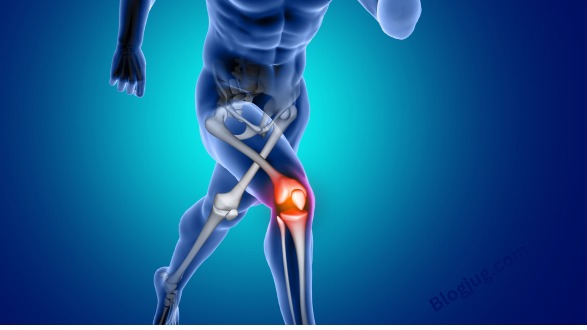Your entire body’s joints may hurt from joint discomfort. It could be a sign of a variety of illnesses. Joint problems are most commonly caused by arthritis. Arthritis comes in over 100 varieties. Pain in the joints might be minor or severe. Treatment options range from basic at-home care to surgery, based on your specific medical condition.

Overview
What is joint pain?
An ache that affects one or more of your body’s joints is referred to as joint pain. The point where two or more of your bones unite is called a joint. For instance, the point where your thigh bone and pelvis meet is called the hip joint.
Commonly, joint stiffness is felt in the hands, feet, hips, knees, or spine. Your joint pain may be intermittent or persistent. Your joints may feel painful, achy, or stiff at times. Some claim to be experiencing a throbbing, scorching, or “grating” feeling. Furthermore, you can notice that your joints are stiff in the morning, but that they get looser and more comfortable with movement. On the other hand, overdoing it may exacerbate your pain.
Joint discomfort can impair joint function and make it harder for you to perform daily duties. Joint discomfort that is too severe can lower your quality of life. In addition to addressing pain, treatment should include returning to normal activities and living life to the fullest.
Possible Causes
What causes joint pain?
The following are the most typical causes of joint pain:
1. Osteoarthritis: A common kind of arthritis called osteoarthritis develops over time as the cartilage, which acts as a cushion between your bones, and ages. Your joints start to hurt and stiffen. Osteoarthritis typically strikes after the age of 45 and progresses slowly.
2. Rheumatoid arthritis: RA is a long-term condition that makes your joints swollen and painful. Your joints often sag; this mainly affects your wrists and fingers.
3. Gout: Acidic crystals from your body build up in your joint and cause excruciating pain and swelling. This condition is known as gout. Usually, this affects the big toe.
4. Bursitis: Bursitis results from overuse. Usually, it’s located in your elbow, shoulder, hip, or knee.
5. Tendinitis: Your tendons are the flexible bands that link your muscles and bones. Tendinitis is inflammation of these bands. Usually, your elbow, heel, or shoulder are affected. It is frequently caused by overuse.
Moreover, rash, fever, or viral illnesses might exacerbate joint discomfort. Joint discomfort can also result from injuries like sprains or fractured bones.
What are the risk factors for joint pain?
Individuals with joint discomfort typically have:
1. Arthritis or other persistent (chronic) illnesses.
2. Previous joint injuries.
3. Overuse is the repeated use of a muscle.
4. Stress, anxiety, or depression.
5. Being obese (body mass index greater than 30) or overweight (body mass index larger than 25).
In addition, age has a role in painful and stiff joints. After the age of 45, joint problems might develop from years of use and wear and tear.
Treatment and Care
What is the treatment for joint pain?
There are techniques to manage joint pain discomfort even though there might not be a solution for it. Simple daily workouts or over-the-counter (OTC) medicines may help relieve the pain in certain cases. In other cases, the discomfort might be an indication of issues that require surgery or prescription medicine to resolve.
Treatments for joint discomfort consist of:
1. Simple at-home remedies: Your doctor could advise using ice or a heating pad on the affected area several times a day for brief periods of time. Taking a warm bath can also provide some help.
2. Exercise: Regaining function and strength can be aided by exercise. The best low-impact aerobic activity is walking or swimming. Individuals who engage in intense physical activities or sports may need to modify their regimen or switch to a low-impact one. Easy stretches will be beneficial as well. A regimen of exercise should be started and continued after seeing your provider.
3. Weight loss: If necessary, your doctor might advise you to lose weight in order to relieve the pressure on your joints.
4. Medication: Nonsteroidal anti-inflammatory medicines (NSAIDs) or acetaminophen (Tylenol®) may be able to reduce your pain. Stronger dosages may require a prescription, however, both medications are available without a prescription. See if this is an appropriate option for you if you have a history of stomach ulcers, renal illness, or liver disease by speaking with your provider.
5. Topical treatments: To help relieve pain, your doctor can suggest topical remedies like gels or ointments that you can apply to the skin over the injured joint area. Some of these might be available over-the-counter, or your doctor might write a prescription for you.
6. Dietary supplements: Supplements used orally, such as glucosamine, may help reduce pain. Prior to using any over-the-counter supplements, see your doctor.
In the event that none of the drugs or therapies relieve your joint pain, your doctor might recommend:
1. Supportive devices to help support your joint and permit ease of movement, such as a brace, cane, or orthotic in your shoe.
2. To assist in gradually reducing discomfort and increasing flexibility, a well-rounded exercise program should be combined with physical or occupational therapy.
3. Antidepressants to enhance slumber.
4. Painkillers to lessen joint pain.
It’s critical to keep in mind that every person reacts differently to medication, especially over-the-counter medications. What benefits one individual might not benefit another. When taking any medication, make sure you carefully follow your doctor’s instructions and let them know if you experience any negative effects.
What choices are there for surgery to treat joint pain?
If your joint pain is persistent and does not go away with medication, physical therapy, or exercise, surgery can be a possibility.
The following surgical options are available:
1. Arthroscopy: During an arthroscopy operation, your joint’s covering is made of two or three tiny incisions made by the physician. Using an arthroscope, a thin, flexible, fiberoptic tool, they can enter your joint to restore your cartilage or remove bone chips that are in or close to it.
2. Joint fusion: By joining the ends of your bones, a surgeon can remove a joint through a process called joint fusion. Your bones may be held in place during the healing process by the surgeon using rods, screws, plates, or pins. Joint fusions are most frequently performed on the hands, ankles, and spine by surgeons.
3. Osteotomy: In order to relieve pressure on the injured area of your joint, an osteotomy involves the surgeon realigning or reshaping the long bones in your arm or leg. This process can help your joints move more freely and decrease pain.
4. Joint replacement: After the cartilage that cushions and shields the ends of your bones wear away, you might require joint replacement surgery if other therapies don’t work. Shoulder, knee, and hip joints can all be treated in this way. A metal or plastic prosthetic joint is implanted after a physician removes a portion of your bone. The majority of patients experience long-lasting pain alleviation following this kind of surgery, which has shown great outcomes.
When to Call the Doctor
Which joint pain symptoms should worry you?
1. Numbness.
2. Swelling.
3. Swollen or stiff joint.
4. Joints that make noises as you move them, such as clicking, grinding, or snapping noises.
5. Painful motion.
6. Joint bending or straightening becomes difficult.
7. Loss of mobility.
8. A swollen, heated joint.
When should a medical professional address joint pain?
It’s important to discuss the issue with a healthcare professional if the pain is preventing you from going about your everyday business. It’s critical to identify the source of your pain as soon as possible and start therapy to reduce discomfort and preserve joint health.
A provider should be consulted if:
1. Fever is experienced along with pain.
2. You’ve lost weight without cause.
3. It hurts too much for you to walk properly.
To determine the possible source of your discomfort, your provider will ask you many questions throughout the visit. You should be prepared to answer some questions:
1. When the in your joint pain started.
2. A familial background of arthritis.
3. The agony you’re feeling.
4. Previous joint damage.
To determine whether there is discomfort or restricted motion in the affected joint, your provider will examine it. Additionally, they will search for indications of damage to the nearby muscles, tendons, and ligaments.
Your provider may also request blood tests or X-rays if required. X-rays can reveal the presence of bone spurs, joint degeneration, fluid in the joint, and other conditions that may be causing your pain. Blood testing can help rule out other illnesses that could be the source of your pain or confirm a diagnosis.
A note from the Blogjug
Joint discomfort may be interpreted as a warning sign, an indication from your body that something is off. Even with this caution, determining the cause of your pain and how to relieve it is not always simple. See your healthcare practitioner if you’ve been suffering from joint discomfort. They will try to figure out what’s going on by probing you with a lot of inquiries. After a little while and some trial and error, you ought to start to feel some relief and be able to resume your favorite activities.









bara yunt